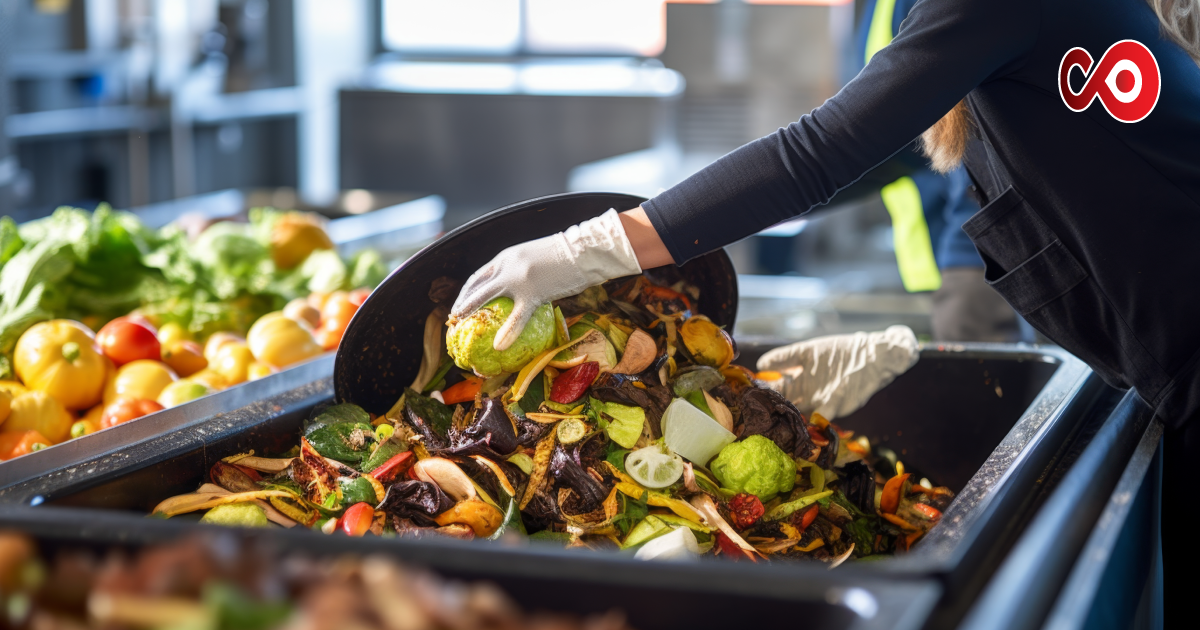Running a restaurant comes with several challenges. One of the biggest challenges you will face is food waste. Food waste often goes unnoticed due to a lack of ingredient management, improper stock inventory, or customer leftovers.
In any scenario, food waste leads to financial loss and a negative impact on the environment. To reverse the situation, you must take necessary steps, such as food waste audits, an online food ordering system, and ingredient repurposing.
Let’s explore seven practical ways to reduce food waste in your restaurant while achieving greater efficiency and growth in the business.
How Food Waste Takes Place in Your Restaurant
Before diving into the solutions, you should take a moment to understand how food waste takes place in your restaurant in the first place. There are several issues to consider, but you may start with the three major aspects:
- Pre-Consumer Waste: Food waste starts from the beginning of your food preparation process. Believe it or not, a significant portion of food waste happens in the kitchen. Whether it’s incorrect portion sizes or spoiling a dish by overcooking, it leads to food waste.
- Expired or Leftover Ingredients: Buying a large amount of ingredient stock may lead to wastage. You may not be able to use all the ingredients you bought due to improper storage or rot, hence wasting food.
- Post-Consumer Waste: This is the stage where the food you serve gets wasted. Oftentimes, customers are seen leaving a portion of the food uneaten due to below-par taste, unsatisfactory service, etc. These leftovers accumulate a larger amount of food waste on a daily, weekly, or monthly basis.
7 Practical Ways to Reduce Food Waste in Your Restaurant
Now that you are aware of the reasons behind food waste in your restaurant, let’s take a look at the seven effective ways to minimise that problem:
Pre-Plan Your Food Preparation
Pre-planning your food preparation may significantly minimise food waste. You must consider the peak and low seasons while arranging the stock accordingly. Check what time of the year customers crowd more into your restaurant.
When considering the seasonal rush, make sure your eatery has enough food during summer to serve your customers, including tourists and locals. On the other hand, seasons like winter or the beginning of spring may not bring as many customers as you like. So, arrange your stock according to the number of customers expected to reduce food waste.
Control Your Inventory
Controlling the inventory is one of the most effective ways to reduce food waste in your restaurant. A proper inventory management system can bring subtle to substantial wastage in front of your eyes. From spilt beverages to rotten ingredients, all can be taken under control.
You can use the FIFO (first-in & first-out) system to maintain your inventory. This will help you utilise the supplies that were stored first and then move to the next batch of supplies. Thus, you can ensure that ingredient spoilage doesn’t add to your restaurant’s overall food waste.
Conduct Regular Food Waste Audits
Auditing the causes of food waste can significantly benefit your restaurant. It will help you to find the root cause of food waste, correct it, and take preventive actions. You may apply a food waste tracker like an app or simply an organised sheet.
Take note of all the backend and frontend food waste for a specific timeframe. This can be a weekly, monthly, or quarterly record. Write down the reason, time, and amount of food or ingredient waste. Also, remember to mention in your report who was responsible for this waste and who reported it.
Reduce Post-Consumer Food Waste
As a responsible restaurateur, you must concentrate on the appropriate proportion size of each serving. Many restaurants have gone down with their businesses because of wastage of food due to oversized portions. This post-consumer food waste can be a big threat to your restaurant’s growth.
Sit with your chefs and servers to resize the portions of dishes that are being wasted more often. Serve your culinary delicacies strategically in smaller portions so they look well-decorated. Such presentations can spike customers’ appetites while almost nothing is left on their plates.
Promote Takeaway Containers
Online ordering systems for takeaways can contribute to reducing food waste in your restaurant. Customers can order precisely what they want to eat, minimising the possibility of wasted excess food. Also, encourage your dine-in customers to order takeaways for their homes through attractive offers.
Another aspect of this scenario is the customers’ leftover food. If you can encourage them to take the uneaten food home, food waste can be significantly minimised. Offer them beautiful packages in which customers will be glad to take the remaining food.
Try Repurposing Your Ingredients
Being creative in your restaurant business can always save your day. And it’s true for saving your restaurant from food waste too. You can start with your ingredients. Repurposing your ingredients is one of the best ways to reduce food waste.
There will be times when you can’t ensure a hundred per cent utilisation of your ingredient stock. But to prevent the situation from getting worse, you can repurpose them. For instance, you can turn unused bones or mushroom ends into stock before they expire. You can also make various fruit peels into tea or chutney.
Give Away Leftovers to Those in Need
If you’re wise enough, you can donate the leftovers to charity. Instead of dumping the leftovers, give them to the homeless people or animals in the street.
Helping the poor souls with the leftovers can not only help you reduce food waste but also promote sympathy and care within the community.
Final Words
That’s our seven practical ways to reduce food waste in your restaurant. By opting for these tips and methods, you can save your restaurant from losing a hefty amount of money each month and year.
To get your restaurant back on track, make sure your inventory is accurate, conduct regular food waste audits, implement proper portion sizes, and more. Moreover, reach out to online food ordering platforms to ensure smooth and waste-free servings.





